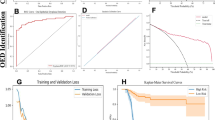Abstract
Data sources
Searches were carried out in the Medline, Embase and PubMed databases in July 2014 with a date range, 1960-2013.
Study selection
Observational cohort studies (either prospective or retrospective) were included. Studies following identical cohorts, case control studies, clinical trials, interventional studies, laboratory studies, experimental studies, studies with no follow-up data, studies of pre-leukoplakia or snuff-induced lesions were excluded.
Data extraction and synthesis
The databases were searched by one reviewer who also screened the studies and evaluated them against the inclusion criteria. Final decision on both inclusion and exclusion of the papers was agreed upon by both authors.
Results
A total of 24 studies were included in this review, involving 12,103 patients. Of the 24 studies included 14 were retrospective. Studies were analysed by subgroup, allowing the authors to identify the rate of malignant transformation as 14.9% with a range of 0.13% to 34%. Only 11 studies gave information on the site of malignant transformation; the most common site was the buccal mucosa. For buccal mucosa the malignant transformation was 3.53%, compared to 24.22% for the tongue. Homogenous oral leukoplakia (OL) was most common, however non-homogenous types showed a higher rate of transformation of 13.1%. There was an increased risk of malignant transformation with age. Most studies demonstrated that there is a higher risk of transformation in the female population.
Conclusions
Malignant transformation rate of OL varies from 0.13 to 34% across the 24 studies reviewed here. The authors identified clear risk factors for malignant transformation of oral leukoplakia, including location (tongue), appearance (non-homogenous), increased age and female gender. There was little evidence that surgical intervention had any benefit in reducing the risk of transformation
Similar content being viewed by others
Log in or create a free account to read this content
Gain free access to this article, as well as selected content from this journal and more on nature.com
or
References
van der Waal I, Schepman KP, van der Meij EH, Smeele LE . Oral leukoplakia: a clinicopathological review. Oral Oncol 1997; 33: 291–301.
Lodi G, Sardella A, Bez C, Demarosi F, Carrassi A . Interventions for treating oral leukoplakia. Cochrane Database Syst Rev 2006; 18: CD001829.
Anglemyer A, Horvath HT, Bero L . Healthcare outcomes assessed with observational study designs compared with those assessed in randomized trials. Cochrane Database Syst Rev 2014; 4: MR000034. doi: 10.1002/14651858.
Gupta PC, Warnakulasuriya S . Global epidemiology of areca nut usage. Addict Biol 2002; 7: 77–83.
Kramer IR, Lucas RB, Pindborg JJ, Sobin LH . Definition of leukoplakia and related lesions: an aid to studies on oral precancer. Oral Surg Oral Med Oral Pathol 1978; 46: 518–539.
Einhorn J, Wersall J . Incidence of oral carcinoma in patients with leukoplakia of the oral mucosa. Cancer 1967; 20: 2189–2193.
Guyatt GH, Oxman AD, Vist G, et al. GRADE guidelines: 4. Rating the quality of evidence-study limitations (risk of bias). J Clin Epidemiol 2011; 64: 407–415.
Feise RJ . Do multiple outcome measures require p-value adjustment? BMC Med Res Methodol 2002; 2: 8.
Holmstrup P, Vedtofte P, Reibel J, Stoltze K . Long-term treatment outcome of oral premalignant lesions. Oral Oncol 2006; 42: 461–474.
Author information
Authors and Affiliations
Additional information
Address for correspondence: Prof Saman Warnakulasuriya, Department of Oral Medicine, King‘s College London Dental Institute, Denmark Hill Campus, Bessemer Rd, London, SE5 9RS, UK.
Warnakulasuriya S, Ariyawardana A. Malignant transformation of oral leukoplakia: a systematic review of observational studies. J Oral Pathol Med 2015; Jul 20. doi: 10.1111/jop.12339. [Epub ahead of print]
Rights and permissions
About this article
Cite this article
Anderson, A., Ishak, N. Marked variation in malignant transformation rates of oral leukoplakia. Evid Based Dent 16, 102–103 (2015). https://doi.org/10.1038/sj.ebd.6401128
Published:
Issue date:
DOI: https://doi.org/10.1038/sj.ebd.6401128
This article is cited by
-
Reduced CD8+ T cells infiltration can be associated to a malignant transformation in potentially malignant oral epithelial lesions
Clinical Oral Investigations (2019)



